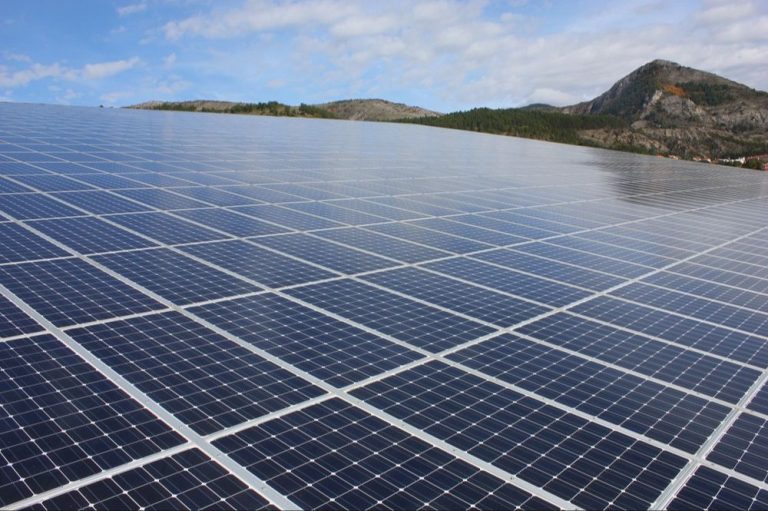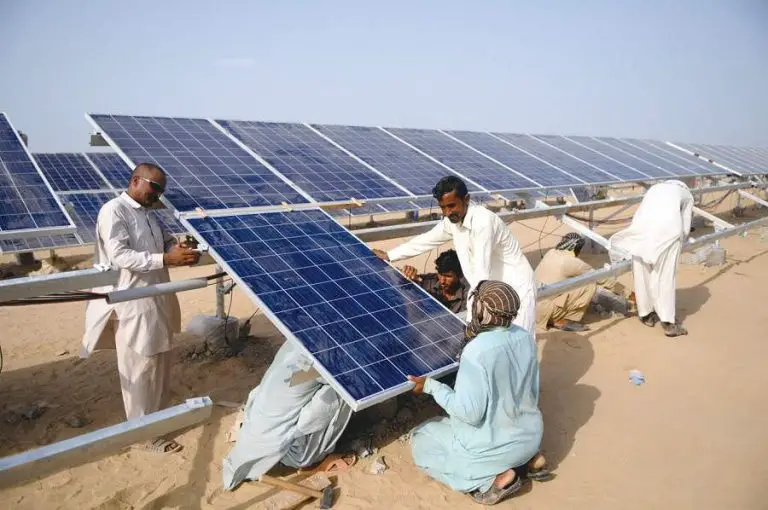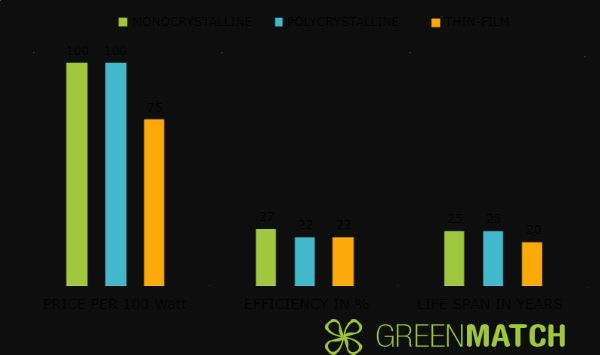What Is It Called When Plants Gather The Sun’S Energy With Light-Absorbing Molecules?
Introducing Photosynthesis
Photosynthesis is the process through which plants and some bacteria capture sunlight and convert it into chemical energy in the form of carbohydrates. It is one of the most important biological processes on Earth, as nearly all life depends on it either directly or indirectly. During photosynthesis, plants and other photosynthetic organisms use solar energy to convert carbon dioxide and water into oxygen and energy-rich organic compounds like glucose. The glucose produced through photosynthesis can then be converted into ATP, the “energy currency” of cells, which powers cellular processes. Without photosynthesis, ecosystems would lack the energy needed to sustain most life.
How Photosynthesis Works
Photosynthesis is a complex process that can be divided into two stages: the light reactions and the Calvin cycle. In the light reactions, sunlight is absorbed by chlorophyll and other light-absorbing molecules called accessory pigments. This gives electrons in these molecules energy to move to a higher energy level. The excited electrons are captured and transported along an electron transport chain, which generates the energy storage molecule ATP. At the end of the electron transport chain, electrons are used to produce NADPH, another energy storage molecule.
In the Calvin cycle, the energy from ATP and NADPH is used to fix carbon from carbon dioxide into sugar molecules. This takes place in three main steps. First, CO2 is incorporated into organic molecules by the enzyme Rubisco. Next, the organic molecules are reduced using electrons from NADPH, forming glyceraldehyde-3-phosphate (G3P), a 3-carbon sugar molecule. Finally, most G3P is recycled to regenerate the CO2 acceptor molecule, while some G3P leaves the cycle and is used to produce glucose and other carbohydrate molecules. The recycling of G3P allows the system to capture and store more solar energy in the form of sugar.
In summary, light energy is converted into chemical energy in the form of ATP and NADPH during the light reactions. This chemical energy is then used to fix and reduce CO2 into sugar in the Calvin cycle. This basic mechanism allows plants to absorb sunlight and create carbohydrates, the foundation of the food chain.
The Light Reactions
The light reactions of photosynthesis involve the absorption of light energy by light-absorbing molecules called pigments, such as chlorophyll. The absorbed light energy is used to drive a series of electron transport reactions, which results in the generation of chemical energy in the form of ATP and NADPH.
The light reactions begin when light is absorbed by chlorophyll and other pigments in a chloroplast. The energy from the absorbed light causes electrons in these pigments to become excited to a higher energy level. These excited electrons are captured and used to power the electron transport chain, which consists of a series of proteins and electron carrier molecules embedded in the thylakoid membrane of the chloroplast.
As the excited electrons move down the electron transport chain, they lose energy. This energy is used to pump hydrogen ions from the stroma into the thylakoid space, creating a concentration gradient of protons. The flow of protons back down this gradient powers ATP synthase enzymes that generate ATP. Meanwhile, the electrons passing through the electron transport chain are used to reduce NADP+ to NADPH.
In the process of photosynthetic electron transport, light energy is initially converted into chemical energy in the form of two compounds: ATP and NADPH. Both of these energy-carrying molecules are vital later during the Calvin cycle reactions of photosynthesis.
The Calvin Cycle
The Calvin cycle, also known as the dark reactions, is the second stage of photosynthesis where carbon fixation occurs. This process converts carbon dioxide and other compounds into glucose. There are three key steps in the Calvin cycle:
- Carbon fixation: This is the process by which carbon dioxide is converted into organic compounds like 3-phosphoglyceric acid (3-PGA). An enzyme called RuBisCO captures carbon dioxide and attaches it to a 5-carbon compound called ribulose bisphosphate (RuBP). This forms 6-carbon compounds that immediately split into two 3-PGA molecules, starting the Calvin cycle.
- Regeneration of RuBP: In order to repeat the process, RuBP needs to be regenerated. Some of the newly formed 3-PGA goes through a series of reactions where it is converted back into RuBP so that the Calvin cycle can continue. This requires energy in the form of ATP.
- Conversion to glucose: The remaining 3-PGA gets converted into glyceraldehyde 3-phosphate (G3P) which can be rearranged into various other sugars like glucose. The end result of the Calvin cycle is the production of glucose from carbon dioxide.
The Calvin cycle is where plants are able to take inorganic carbon from carbon dioxide in the atmosphere and convert it into organic carbon compounds like sugars. This ends up generating energy-rich molecules that the plant can use for growth and other functions.
Where Photosynthesis Occurs
Photosynthesis takes place in plant cells, specifically in the chloroplasts. Chloroplasts are organelles found in plant cells and algae that capture sunlight and use it to produce sugars from carbon dioxide and water. Inside the chloroplasts are stacks of thylakoids, which are the sites of photosynthesis. The thylakoid membrane contains chlorophyll pigments that absorb sunlight and convert it into chemical energy.
In addition to the thylakoid stacks, chloroplasts also contain an inner liquid material called the stroma. This is where the Calvin cycle reactions take place, after the initial light-dependent reactions occur in the thylakoids. The stroma contains enzymes that help catalyze the chemical reactions of photosynthesis. Overall, the chloroplast is the structure in plant and algae cells where the entire process of photosynthesis takes place, converting light energy into chemical energy that fuels the organism.
The Chemical Equation
The chemical equation for photosynthesis shows the process by which plants convert carbon dioxide (CO2) and water (H2O) into oxygen (O2) and glucose (C6H12O6) using energy from sunlight.
The basic chemical equation is:
6 CO2 + 6 H2O + Light Energy → C6H12O6 + 6 O2
This equation shows that six molecules of carbon dioxide (CO2) combine with six molecules of water (H2O) in the presence of light energy from the sun. The end products are one molecule of glucose (C6H12O6) and six molecules of oxygen (O2).
The glucose molecule contains energy derived from sunlight. Plants use this glucose to grow and function. The oxygen molecules are released into the atmosphere through the stomata in plant leaves. This oxygen is essential for most living organisms on Earth that depend on it for cellular respiration.
The chemical equation for photosynthesis illustrates how plants are able to convert light energy into chemical energy that they can use as fuel. It also shows the valuable byproduct of oxygen that plants produce for other life on Earth.
Factors That Affect Photosynthesis
There are several key factors that affect the rate of photosynthesis in plants. These include light intensity, carbon dioxide (CO2) concentration, temperature, and water availability.
Light Intensity: The availability of sunlight provides the energy plants need to drive the process of photosynthesis. Higher light intensity leads to faster photosynthesis, assuming other factors are not limiting. However, at very high light intensities, the rate plateaus as other constraints become limiting. Additionally, excessive light can damage the photosynthetic machinery.
Carbon dioxide: CO2 is one of the primary reactants in photosynthesis, so higher concentrations allow the reactions to proceed faster. Plants grown in environments enriched with additional CO2 often show faster photosynthetic rates. However, photosynthesis cannot occur indefinitely faster at elevated CO2 levels due to other constraints.
Temperature: Like most chemical reactions, the rate of photosynthesis is influenced by temperature. Rates increase as temperatures rise, up to an optimum level. However, at very high temperatures, rates fall off as enzymes and cells cannot function properly. Photosynthesis also ceases at freezing temperatures when enzymes denature and membranes solidify.
Water Availability: Photosynthesis requires water as a reactant and for internal transportation of materials. With insufficient water, plants cannot keep their stomata open to allow inward diffusion of CO2. Closed stomata and lack of water also disrupt the Calvin cycle reactions, reducing photosynthetic output.
C3, C4, and CAM Plants
Plants have evolved different pathways of carbon fixation, which refers to the way plants take carbon dioxide from the atmosphere and turn it into sugar. There are three main types of carbon fixation pathways in plants: C3, C4, and CAM.
The key difference between C3, C4, and CAM plants lies in how they initially fix and process carbon dioxide from the atmosphere.
C3 plants fix carbon dioxide directly into a three-carbon compound using the Calvin cycle during photosynthesis. They are the most common type of plants, including rice, wheat, soybeans, cotton, and many trees and vegetables. C3 plants are adapted to cooler, wetter climates and do not thrive in hot, dry conditions.
C4 plants have evolved an additional carbon fixation pathway to avoid photorespiration, which is the wasteful loss of carbon dioxide. C4 plants initially fix carbon dioxide into a four-carbon compound in mesophyll cells. The four-carbon compound is transported to bundle sheath cells where the Calvin cycle occurs. Examples of C4 plants include corn, sugarcane, and many types of grasses. C4 plants are well adapted to hot, dry conditions.
CAM plants have developed a carbon fixation pathway to conserve water in arid environments. CAM stands for crassulacean acid metabolism. CAM plants open their stomata at night to take in carbon dioxide and store it as malic acid. During the day, malic acid is broken down to release carbon dioxide for the Calvin cycle. CAM plants include pineapples, agaves, and succulents like cacti.
The specialized pathways of C4 and CAM plants prevent photorespiration, allowing them to thrive in hot, dry environments that C3 plants cannot tolerate. Understanding the differences in carbon fixation is key to improving crop productivity and adapting plants to climate change.
Ecological Importance
Photosynthesis is arguably the most important biological process on Earth. It is the basis for the vast majority of life on our planet. Through photosynthesis, plants, algae, and some bacteria are able to harness the energy from sunlight to produce carbohydrates from carbon dioxide and water. In turn, these carbohydrates are used by the organism and provide energy and nutrients for animals and other heterotrophs when they consume plants or algae.
Photosynthesis is the foundation of almost all food chains and food webs. The carbohydrates, fats, and proteins that make up the bodies of heterotrophic organisms are fuel that has its origins in photosynthesis. Further, the oxygen atmosphere that most organisms depend on is the result of photosynthetic organisms releasing oxygen into the environment.
Without photosynthesis, the landscape of Earth would be dramatically different. The only organisms able to persist without it would be those that can obtain energy from chemical sources like sulfur, iron, or thermal vents in the deep ocean. It is likely that complex life would not have evolved if photosynthesis had not evolved first and enriched the atmosphere with oxygen. Thus, the emergence and continued persistence of photosynthesis has had an immeasurable impact on the ecology of Earth.
Applications and Recent Advances
Understanding the process of photosynthesis has allowed scientists to find new ways to boost agricultural productivity and increase food supplies for the growing global population. By modifying existing crops and developing new varieties, researchers have increased yields, enhanced nutrient levels, and improved resistance to pests, diseases, drought, and other stresses.
For example, introducing genes from photosynthetic bacteria has allowed rice plants to fix nitrogen from the atmosphere, reducing the need for fertilizers. Other projects have focused on increasing the efficiency of the light reactions, such as enhancing chlorophyll production or electron transport rates. Scientists have also found ways to reduce photorespiration, which wastes energy during photosynthesis.
In addition, algae and cyanobacteria that carry out oxygenic photosynthesis are being engineered as “cell factories” to produce biofuels, pharmaceuticals, and other valuable compounds. Synthetic biology approaches are rewiring the Calvin cycle to optimize carbon fixation. Projects are also underway to develop artificial leaves that mimic natural photosynthesis using sunlight to split water and make fuels.
As modern agriculture faces climate change, population growth, and dwindling resources, improving our understanding of photosynthesis will be crucial for meeting global demands sustainably and efficiently. The untapped potential remains enormous.






